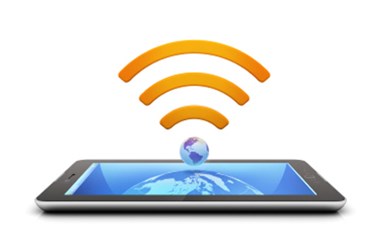Beacons, Geofencing, And Their Impact On Customer Experience
By Ally Kutz, contributing writer

Location-based technology and its impact on how your merchant clients can leverage it to enhance customer experience was a topic for a panel at BlueStar’s VARTECH 2015.
Panelist Jon Levin, product integration manager at Star Micronics, said beacons are being used in a variety of ways. “We’re starting to see a lot of location-based pushing of product promotion.” Another application is managing hardware in a mobile environment. “When you’re moving around you’re taking the point of sale with you, it gets really hard to manage which printer you’re connecting to and what source you’re connecting to,” Levin explained.
He pointed out the cost of these solutions is well within reach of your merchant clients. “Depending on what you want to do with the beacon technology, it can be as low as dollars. Certainly the benefit of a lot of these applications well outweighs the small amount of outlay of capital,” he said. “I think we’re going to see a lot of other applications that we haven’t uncovered.”
Jay McBain, CEO of Channeleyes, pointed out location-based solutions also facilitate valuable opt-ins for you clients. He advised, “When you’re talking to your customer next time, ask what the value of an opt-in is for them. If they don’t know the answer in monetary terms, they should. Industry averages, if you’re looking at restaurants and bars, it could be over five dollars. Being able to get a text message to [consumers] or being able have a receipt printed with a survey on the end — it’s nice to get feedback, but it’s even nicer to get your opt-in.”
Levin said opt-ins allow merchants to use location-based solutions to provide just-in-time marketing when the consumer is in the store or pre-disposed to spending money. “Secondly, it allows them to provide relevant messaging,” he said. “They have shopping history on the consumer. They know what they’ve bought in the past, and what their preferences are. As trusted advisors, you’re providing a tremendous service, one that is easily measurable.”
The panel discussed an example of a consumer walking into a football stadium. The consumer’s smartphone sends a signal that he has arrived. Because he is a customer who bought a particular brand of beer and hot dogs at the stadium in the past, he receives a message with a buy one, get one free offer. The message also contains the beer brand’s logo; the message is sponsored. This turns an m-commerce application into a revenue generator — and VARs can share in that revenue stream as well.
Dan Lehotsky senior manager of Epson’s RTSC/RDC technical team in Toronto, added, however, “We’ve talked a lot about the messaging capability … There’s also room for folks to start developing applications around traffic in the store so we know exactly how consumers are wandering around. There should be a whole avenue of built around the traffic pattern.”
Luke Wilwerding, director of Elo Interactive retail solutions, added location-based solutions can also deliver messages to interactive displays in the store. “We have fixed in-store platforms, where a consumer can create a shopping cart at home and, with Bluetooth, move that cart back to the fixed in-store display, to ensure the conversation is now with a store associate — versus moving the conversation to their phones and having them walk around shopping with their heads down.”
“There are some really cool implementations of the beacon, but as you look at the core fundamental technology there, it’s Bluetooth, and in Bluetooth today, there’s a lot of cool things that can be done with it,” Wilwerding said. “I will steer people back to the ISVs in the room, because at the end of the day, it is software enablement that bring a lot of the capability to the solutions.”
The panel also discussed the differences between beacon and geofencing solutions. Levin explained, “Beacon is really good for micro-location in a store. Geofencing is great sending a message or taking action because someone just arrived at the store.” He pointed out, it doesn’t have to be either/or — you can use both.
An example the panel discussed is a hotel chain that uses geofencing to offer free Internet to previous customers on the premises. Once a guest of the hotel walks into a restaurant, beacons work to engage the customer.
“Essentially, you need the beacon technology to opt-in, because there has to be an access point. And geofencing gives you the ability to farm a much larger field than immediate store location, because of the limitations associated with Bluetooth. You want to offer both, if applicable,” Levin said.
VARTECH 2015 is being held Sept. 14 to 18 on the Royal Caribbean Enchantment of the Seas cruise ship traveling from Port of Cape Canaveral, FL to CocoCay, Bahamas. VARTECH, the annual conference for value-added distributor BlueStar partners, focuses on data collection, point of sale, mobility, digital signage, RFID, and security. For more information on BlueStar and VARTECH, go to www.BSMinfo.com/solution/InsideBlueStar.
